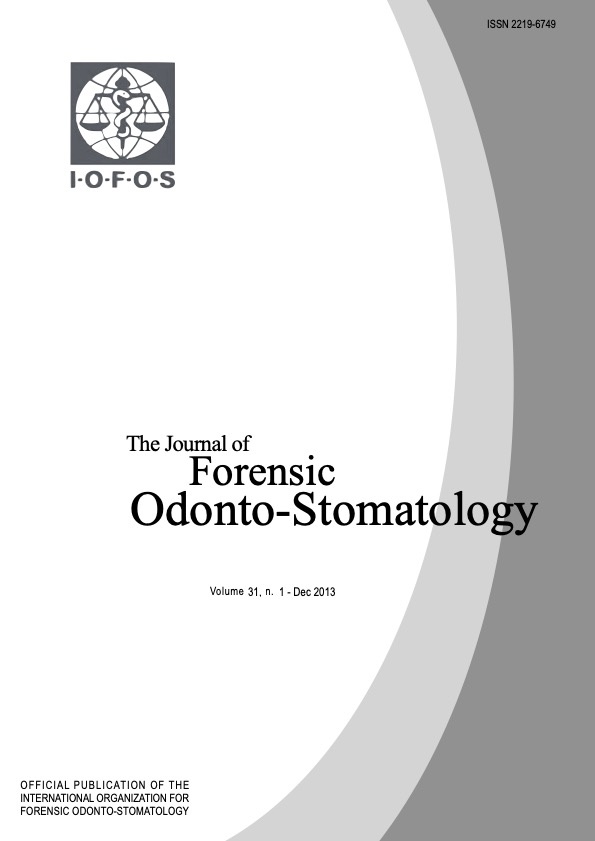Analysis of bitemarks in foodstuff by computerized tomography (Cone Beam CT) - 3D reconstruction
Keywords:
Cone Beam CT, bitemark, foodstuff, three-dimensional analysisAbstract
The three-dimensional analysis of forensic evidence has become a highlighted procedure when compared to the traditional methods. This three-dimensional analysis is based on the registration of the surface of the bitten object.
The authors propose the study of the surface and interior of the bitten object by cone beam computerized tomography (CBCT), which is used in dental practice. In this study, CBCT is applied to the analysis of bite marks in foodstuffs, which may be found in a forensic case scenario.
6 different types of foodstuffs were used: chocolate, cheese, apple, chewing gum, pizza and tart (flaky pastry and custard). The food was bitten and dental casts of the hypothetical suspects were made.
The dental casts and bitten objects were registered using an x-ray source and the CBCT equipment iCAT® (Pennsylvania, EUA). The software InVivo5® (Anatomage Inc, EUA) was used to visualize the tomographic cuts and 3D reconstructions of the objects, measure the radiopacity in Hounsfield Units (HU), and to analyze the images.
There were obtained digital images in axial cuts from all the material in study. For each type of sample a set of HU values was obtained, which varied between 2199HU e -981HU. It was possible to measure depth of the bitemarks and to do the metric analysis on the bitemarks and dental casts.
The HU values attributed to each material allowed comparing the radiopacity of the foodstuffs and casts relatively to water and air. All the used materials were successfully reconstructed in three dimensional images. Through the axial cuts and three-dimensional reconstruction it was possible to analyze the depth of the bitemark and dental arches.
Computerized tomography has the potential to become an important tool for forensic sciences, namely for the registration and analysis of bitemarks in foodstuffs that may be found in a crime scene.
Keywords: Cone Beam CT, bitemark, foodstuff, three-dimensional analysis

